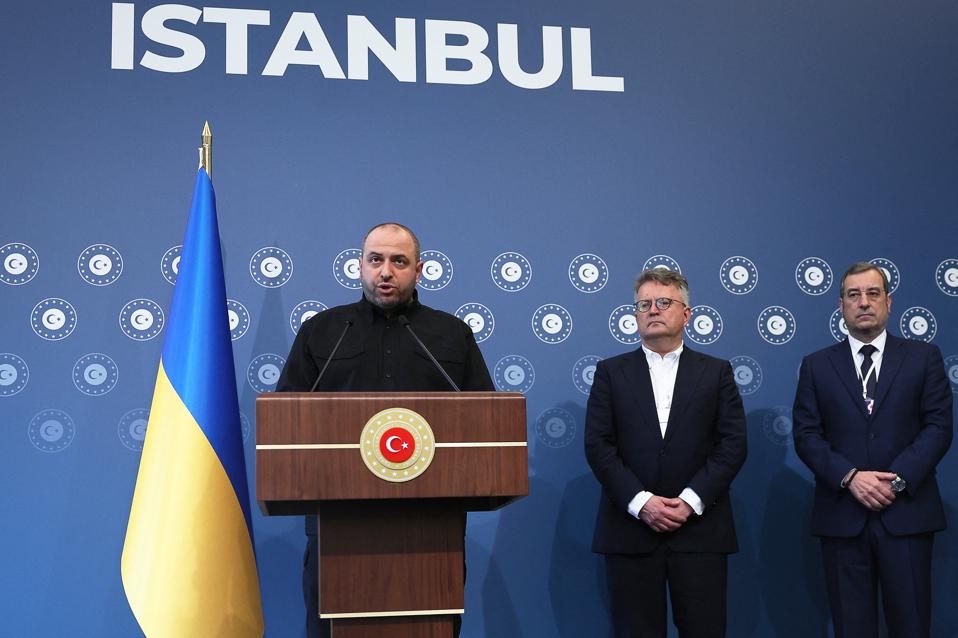Dispatches from Ukraine. Day 1,195.
Ukraine Carries Out Historic Drone Strike on Strategic Russian Airbases
On June 1, Ukraine launched one of its most audacious and effective drone strikes since the start of Russia’s invasion, targeting four air bases deep inside Russia with 117 first-person-view (FPV) drones. Codenamed operation “Spider’s Web,” and meticulously planned over 18 months, the attack struck remote airbases in Siberia and the Russian Far East, approximately 3,400 miles from Ukraine’s eastern border and previously considered out of Ukraine’s reach. Prior to this strike, airfields at these remote locations, where Russia nuclear capable, long-range bombers are based, were considered nearly impervious to attack.
Ukrainian intelligence revealed that the drones were covertly smuggled into Russia, concealed within civilian trucks, and remotely activated. Russia’s defense ministry said that multiple aircraft were set ablaze and characterized the assault as a “terrorist attack” despite the strikes being directed at military targets during wartime.
The head of the Security Service of Ukraine, Vasyl Malyuk, said a day after the strike that 41 enemy aircraft were destroyed. Other assessments, however, including one by BBC News Ukraine, tallied a more modest number, upward of 11 destroyed jets.
Despite inconsistency in the number of enemy aircraft reported destroyed, Ukraine’s President Volodymyr Zelenskyy praised the operation as a turning point, calling it “brilliant” and “perfectly prepared” in a Telegram social media post soon after the attack. “These are Ukrainian actions that will definitely be in history textbooks,” he continued.
This operation, which cost Ukraine approximately several hundred thousand to several million dollars, at most, to execute, may have cost Russia as much as $7 billion in lost military assets, according to Ukrainian government estimates. The loss of even a single strategic aircraft, however, is invaluable to Russia, as the country has not produced such planes since the collapse of the Soviet Union and has lost some critical technologies needed to develop new ones.
In addition to the blow to Russia’s air power, the aftermath of the recent Ukrainian strike, hailed by some as Russia’s “Pearl Harbor,” may still be unfolding. Ukraine has, at least temporarily, neutralized the narrative of a stalemate in the war, exposed Moscow’s vulnerabilities, and weakened the Russian delegation’s position in the latest round of bilateral peace talks, held on June 2.
Ukraine’s most complex special operation on Russian territory to date, while hailed as a major success, also carried notable risks. According to an article by The Economist, a senior Ukrainian official, who spoke anonymously, acknowledged that the operation could potentially alienate some Western partners.
Additionally, skepticism remains in Kyiv about the feasibility of repeating such an attack, as Russian forces are expected to analyze the remnants of the drones and develop more effective countermeasures, including electronic jamming, as noted by an anonymous Ukrainian military communications specialist in reporting by Forbes Ukraine.
Russia-Ukraine Peace Talks
Russia and Ukraine met in Istanbul, Turkey, for just over an hour on June 2, marking only the second round of direct talks since 2022. Moscow presented stringent demands, including Kyiv’s surrender of Crimea and four southeastern regions, three of which are only partly under Russian control, restrictions on Ukraine’s military, and recognition of Russian sovereignty, terms Ukraine rejected as unacceptable. Ukrainian President Zelenskyy previously reaffirmed that Ukrainian forces will not withdraw from any territories of Ukraine.
The two sides agreed to prisoner exchanges and to each return the bodies of 6,000 deceased enemy soldiers, but no ceasefire or peace breakthrough emerged. Turkey’s President Recep Tayyip Erdogan called for a summit involving Russian President Vladimir Putin, Zelenskyy, and U.S. President Donald Trump, though U.S. mediation efforts show little progress.
Russia’s Attacks on Ukraine
Between May 30 and June 2, Russian forces launched a series of deadly attacks across southern and northeastern Ukraine, killing at least seven civilians. In the southern regions of Kherson and Zaporizhzhia, artillery and drone strikes killed four civilians, including a child. Meanwhile, three residents were killed in Russian attacks on Ukraine’s northeastern Kharkiv oblast, or province.
A Russian missile struck a Ukrainian military training facility on June 1, leaving at least 12 servicemembers dead and more than 60 injured despite an air raid alert that had sent most personnel into shelters during the attack. No mass gatherings were reported at the facility. Ukrainian authorities have launched an investigation to assess accountability and vowed consequences for any security lapses. Ukrainian Ground Forces Commander Mykhailo Drapatyi resigned following the deadly strike, citing a sense of personal responsibility.
On June 1, two railway bridges collapsed in Russia’s southwestern Bryansk and Kursk regions. In Bryansk, a road overpass bridge collapsed, sending multiple vehicles plunging onto a passenger train bound for Moscow; seven people were killed and more than 70 others injured. Authorities determined an explosion caused the collapse and opened a criminal investigation. In Kursk, a freight train derailed after a bridge fell, injuring a crew member. The Kremlin blamed Ukraine in both cases.
By Danylo Nosov, Karina L. Tahiliani

